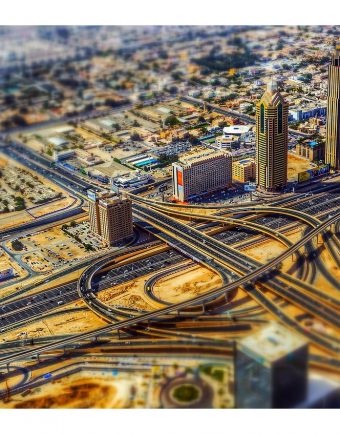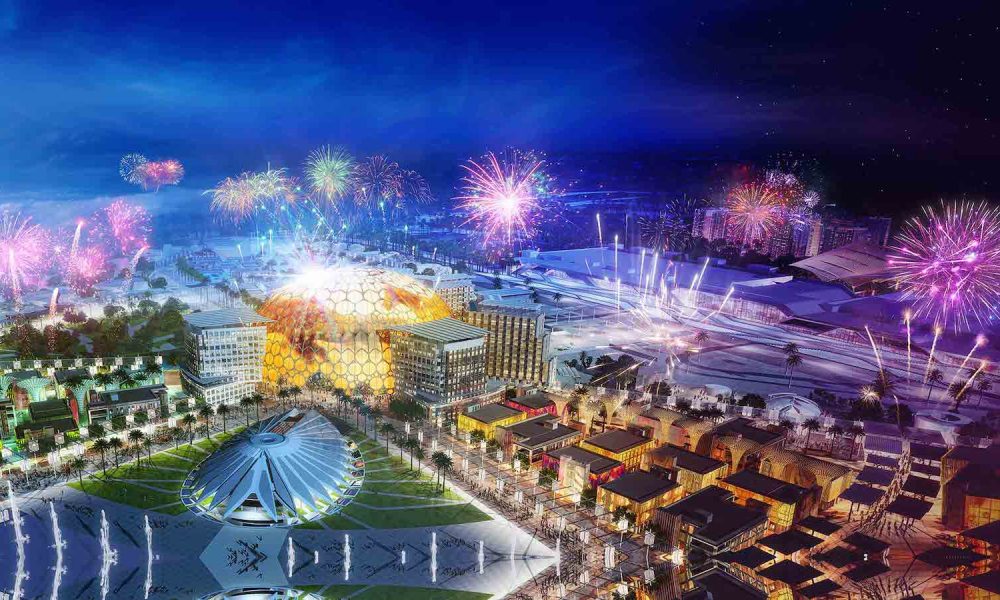

Přejít k obsahu | Přejít k hlavnímu menu | Přejít k vyhledávání

3D printer or robotic policeman. City that reaches beyond imagination, where impossible becomes reality. Dubai means “place of meeting” in Arabic. But when the desert nomads founded a settlement on the Gulf Coast five thousand years ago, they really could not guess who was going to be here once. Today,
3D printer or robotic policeman. City that reaches beyond imagination, where impossible becomes reality.
Dubai means “place of meeting” in Arabic. But when the desert nomads founded a settlement on the Gulf Coast five thousand years ago, they really could not guess who was going to be here once. Today, everyone is here. Tourists, scientists, formula 1 drivers, acrobatic pilots, shopaholics, architects, visionaries, merchants, millionaires. There is one endless encounter of man with technology. Meeting the future. And now imagine the moment when this hypermodern metropolis is hosting the Expo 2020. The crazy town has already fallen into another madness.
Of course, ruling petrodollars means unimaginable financial possibilities for a common mortal. But while somebody is gilding at home, buying yachts or soccer clubs, the al-Maktoum sheikh family decided to become the capital of technology and innovation in the emirate.
ou may have heard much of the story. About the famous Burj al Arab hotel in the shape of a sail. Burj Khalifa’s tallest building in the world. The Atlantis The Palm Hotel, which is built on the sea-shaped palm tree. About skiing at the local shopping centre. A busy street or sandy beaches, behind which rises a giant skyscrapers. Megalomania and competition were just here, it is and will be.
In addition, Dubai has increasingly concentrated in recent years on the area of “smart technologies” for the city, the long-term sustainability of projects. That’s practically why at the time the World Expo Exhibition was awarded to Dubai in 2020, the Smart City project was also announced, which aims to create the world’s most sustainable city in the world by 2030. In our often mentioned, yet in practice not very widespread area of IoT, here it is visible today at every step. And the goal of Dubai is to connect all devices and data. It has an infrastructure that will connect everyday life, society, mobility, the environment and the economy.

A few examples for all?
Last year, for example, the first taxi test of the future took place here. The two-seat 18-rotor unmanned vehicle designed by the German company Volocopter has already successfully completed its first test flights over the metropolis. A mobile application is already ready for you to use this droning taxi (so far) to the designated locations. The test showed that the technologies are ready. Now it’s about finding the legislative framework and the optimal security model, and there is nothing to prevent the start of the project.
Between Abu Dhabi and Dubai, preparatory work on the hyperloop project is being finalized. Capsule transport, which should be able to transport passengers in 12 minutes from one place to another. Keep in mind that the distance between the two largest places in the Emirates is 139 kilometres, and nowadays it takes about half an hour to manage it. A giant solar park is set up in the desert to be able to generate 5,000 megawatt hours in 2030, which would be enough for 2000 households throughout the year. Its dominant feature should be a 260-meter-high solar building. Robocop is being prepared – a robotic policeman to protect city residents 24 hours a day, 7 days a week. These robots should be a full quarter of the force in 2030. The area of 3D printers also has an extraordinary boom. Dubai has pledged to print a third of the skyscrapers in ten years. The first is to be in the United Arab Emirates capital in 2020, and the team is just finishing up the latest plans. If calculations don’t disappoint, a total cost reduction of 50 to 70 percent is expected and a further 50 to 80 percent reduction in human use is expected. And 60 percent more efficient waste management.

Bohemia can enjoy at least a small Czech footprint. Very successful in the Middle East, for example, the Holešov company ELKO EP, which will build a considerable part of local hotels with smart electrical installations, and is currently working with local partners to build so-called smart pillars that should not only just save lighting itself, but also monitor traffic, work as a Wi-Fi router, touchscreen infopanel, recharging stations for automotive and electric bicycles, or watch air temperature and quality
And the Expo itself, which will take place in 2020 will occupy areas with a total area of approximately 4 x 2 kilometres. Construction of the site began in 2015. The main part, designed by the American company HOK, is planned around Al Wasl Square, which means “connection” in Arabic. In the first phase, more than 5 million cubic meters of sand have been moved to date, which is enough sand to fill about 1,800 Olympic pools.
An interesting fact is that half of the electricity used at the exhibition will come from fully renewable sources, half of which will be generated on site. The vast majority of the material (up to 90%) used for the construction will be reused for other constructions. The rest of the buildings will continue to be used as they are. Although most of the United Arab Emirates is covered in deserts, the exhibition plans to use up to 25% less water than required by regulations.